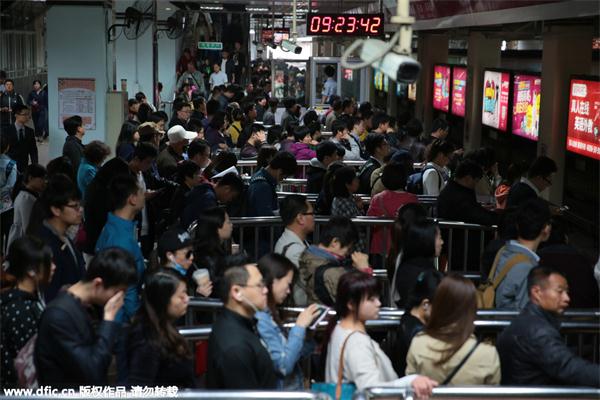 |
|
People wait to board a train during rush hours at a subway station in Beijing. [Photo/IC] |
With the "urban disease" becoming increasingly evident in Beijing, relocation of departments with non-capital functions outside the city has become a serious issue.
State capitals across the world have huge advantages over other cities. This is especially true for China, because Beijing has always been the most robust center of Chinese society. Because of its advantages in drawing talents, and as a center of information, culture and technology, Beijing has been a magnet for people.
It is this magnetism, along with Chinese people's traditional view of seeing the capital as an all-embracing social core, that is largely responsible for Beijing's overpopulation. It has also made it the hub of a huge number of companies, with deteriorating environment and poor urban management.
The development of a capital embodies the gradual maturity and expansion of capital functions, as well as the accumulation of non-capital functions. But the capital and non-capital functions of such cities have become more complicated in modern times, and made how to strike a balance between the two a key issue.
The question of modifying Beijing's functions is not only about a change in people's mindset, but also about innovative practices and deepening reform and opening-up. Capitals across the world have non-capital functions and their proportion could influence the urban management systems. So while relocating Beijing's non-capital function departments to the Beijing-Tianjin-Hebei region, special care should be taken to avoid confusing between the capital's two exclusive functions of administration and providing security and services.
Since many of the urban ills are caused by overpopulation, the aim of the exercise should be to relocate departments and institutions with high numbers of employees. The authorities could start by relocating some departments to neighboring areas. Of course, we cannot reduce the cohesiveness and appeal of certain departments, but in this age of information and modernized transportation, they need not be located in the heart of the capital to fully perform their functions.
The need is also to shift from Beijing's central business district business establishments that draw huge numbers of people, such as wholesale markets and labor-intensive industries.
But since very few couples work for the same company or organization, ensuring proper resettlement of families in which either the wife or the husband is affected by the relocation of enterprises will be a big challenge. Should the non-affected spouse resign and move with the one affected, or should the family live apart?
Moreover, given the surfeit of opportunities in the Beijing-Tianjin-Hebei region, it is very attractive to potential migrants. So if effective population control measures are not taken, the region will face the same problems that Beijing is encountering today. To tackle such future problems, and solve the existing ones, discreet planning and implementation are needed.
Effective relocation of departments and institutions with non-capital functions requires complete awareness of all the causes of Beijing's overpopulation followed by adoption and implementation of precautionary policies and measures to deal with them.
Another effective long-term plan is the promotion of balanced social development across the country, because the "urban disease" Beijing is suffering from is the result of nationwide unbalanced resource allocation and social development. Only by breaking the existing rigid system of administrative division can coordinated development in the Beijing-Tianjin-Hebei region be genuinely realized.
The author is a professor at the College of Urban and Environmental Sciences, Peking University.

I’ve lived in China for quite a considerable time including my graduate school years, travelled and worked in a few cities and still choose my destination taking into consideration the density of smog or PM2.5 particulate matter in the region.